Messina is a city where you need to live to immerse yourself in the beauty of its art and appreciate the taste of its culinary traditions and the hospitality of its inhabitants. Entering the ancient and noble doors of Sicily will be an experience full of charm. Coveted, and strategic, it has been at the center of many controversies for centuries. A place of creativity and discussion, one of the most respected Italian artists was born here: Antonello da Messina.
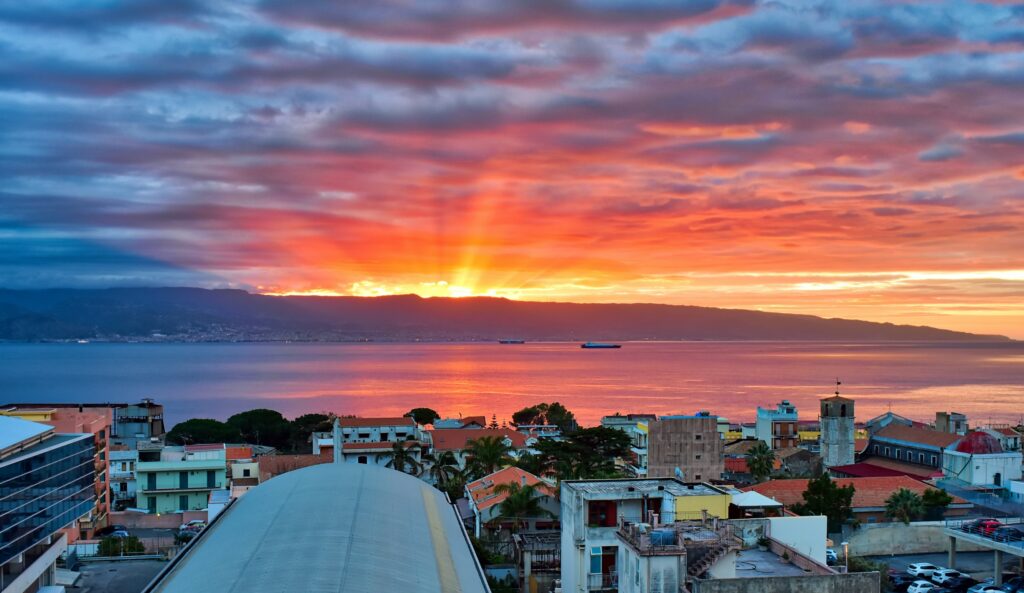
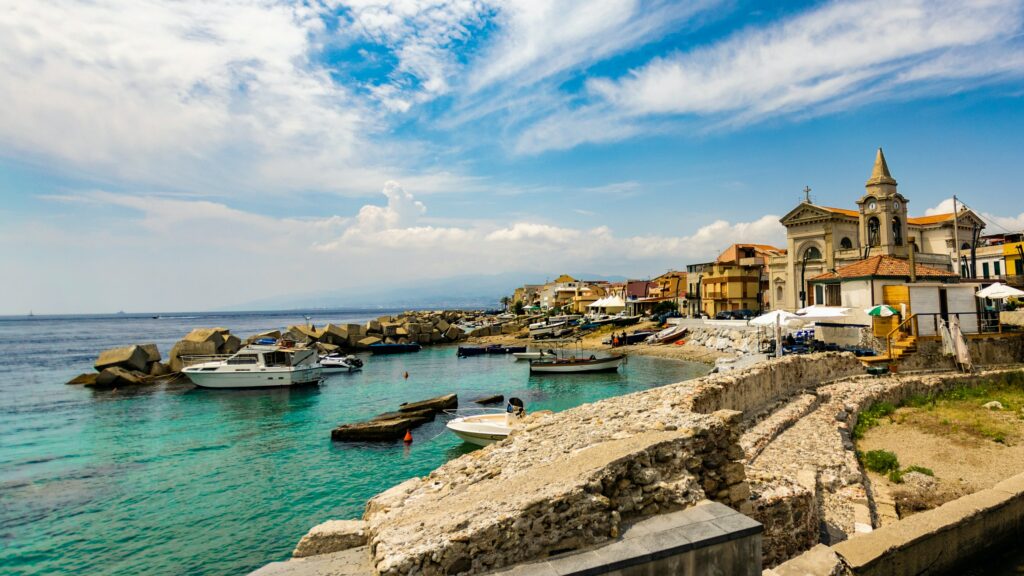
In addition to all this, you can get acquainted with one of the most active ports in Italy, a historical center full of Art Nouveau buildings, unique views, and a sandy coast stretching for more than 24 kilometers.
Find out everything you can do in the city of Messina by the strait. A complete itinerary of all the best excursions and places that can be found.
Norman Cathedral and Piazza Duomo
The Cathedral of Messina, located on the square of the same name (where the Orion Fountain is also located), is a symbol of the city. Destroyed several times, it was rebuilt in an attempt to preserve its original Norman forms. It was consecrated in 1197, but already in 1294 it was devastated by fire and modified in its appearance by the addition of marble statues and windows. Severely damaged by the earthquake of 1908 and the bombing of World War II, only the central Gothic portal, one on the right side and two smaller ones, remained in the original building.
Inside you will find a three-nave basilica with 13 rows of columns. In the central part, there is a reconstruction of the mosaic of the Blessing Christ, under it, you can admire the Canopy, a particularly complex work. If you continue to the left, you will find the only mosaic that has survived to this day. She represents the Virgin on the throne with a Baby. The structure is complemented by twelve statues depicting the twelve apostles.
The interior of the basilica is rich in tombstones and chapels, symbolizing the wealth of some families of Messina. The most famous work is the so-called Golden Manta, made by the famous Florentine jeweler Innocenzo Mangani and decorated for many years with precious and sparkling stones. The treasures are complemented by candelabra, silver bowls, as well as various busts.
In addition to the Duomo, the bell tower stands out on the square, which rises 60 meters with a huge mechanical clock. The first floor depicts 4 stages of life: childhood, youth, maturity, and old age. Below are seven Greek gods driving a chariot drawn by different animals representing the days of the week. On the second floor, on the contrary, the most important events in the life of Christ. On the third floor, you can admire the symbol of the city, a free-range rooster, the emblem of the renaissance, surrounded by two statues. On the fourth floor, the lion squeezes between the paws.
The historical center of Messina
The historic center of Messina is charming and rich in art, like most Sicilian municipalities. In the center is Garibaldi Street, an elegant, sophisticated artery surrounded by buildings. Nearby is the Vittorio Emanuele Theater, built in the neoclassical style thanks to Ferdinand II of Bourbon. It was opened in 1852, and then almost completely rebuilt. Your walk will take you to Piazza Italia, where you will find the Government Palace, the seat of the prefecture. In ancient times there was a Benedictine monastery in this place.
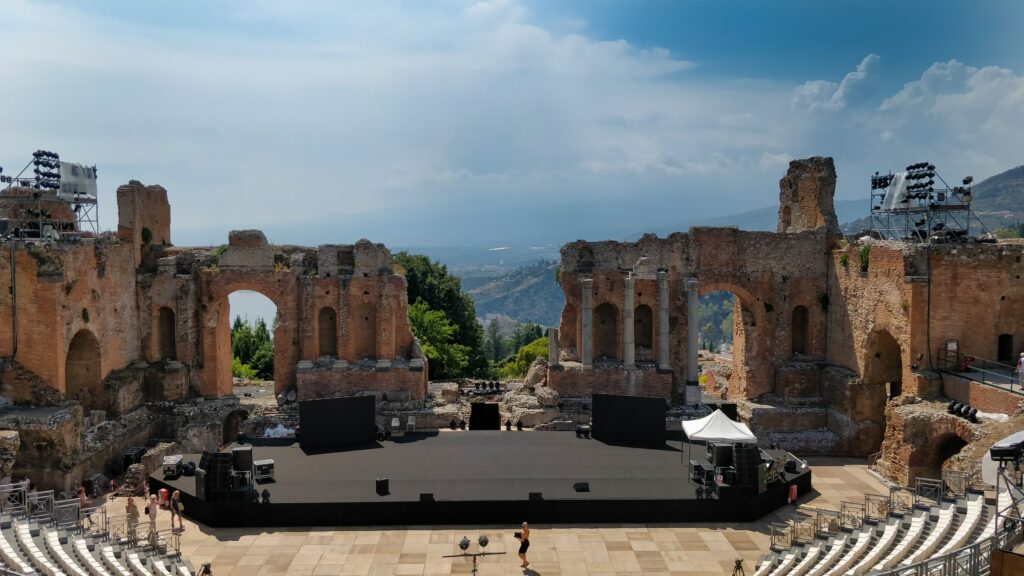
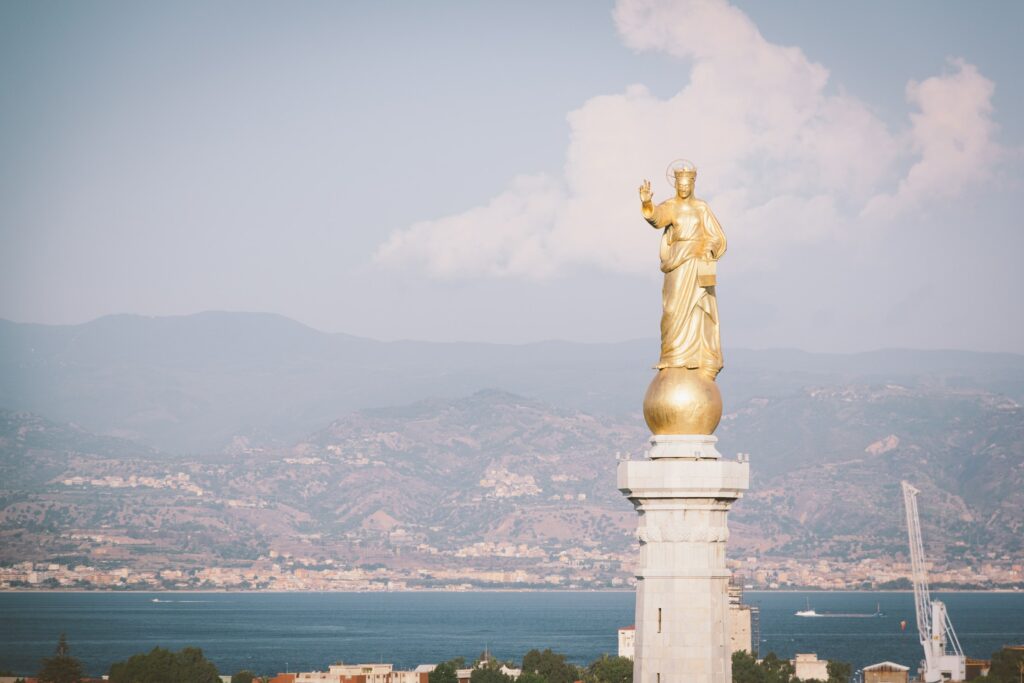
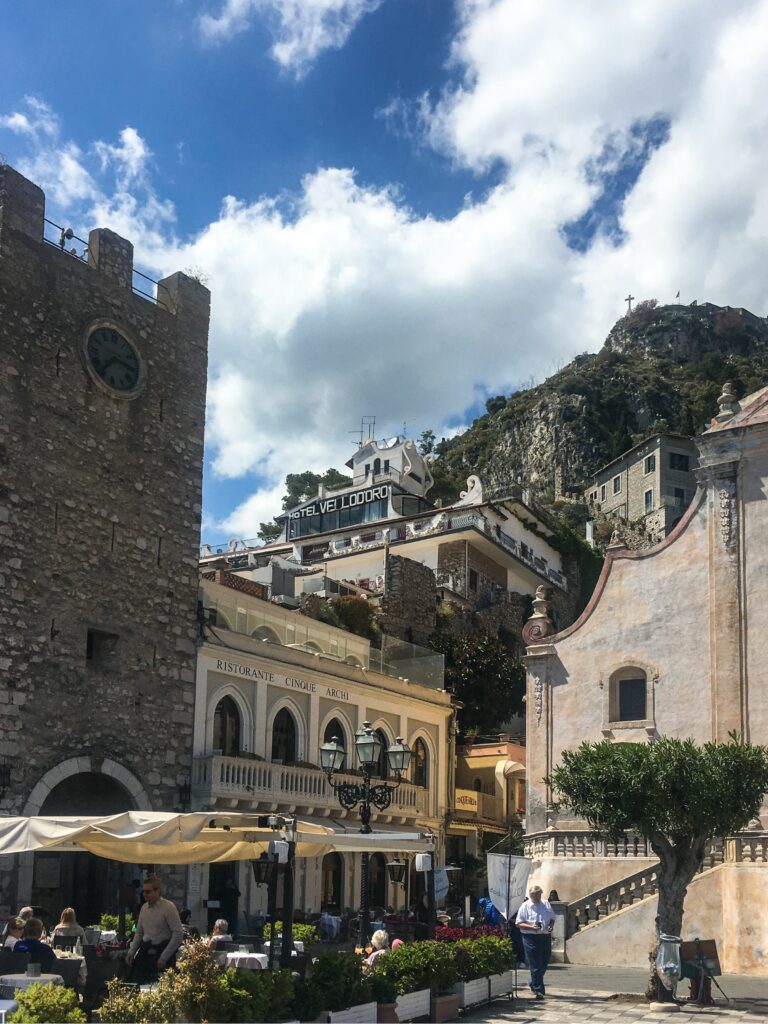
Both classical and Renaissance elements are present on the facade of the building. Staying in the center, we can admire the Palazzo Zanca, where the town hall is located inside a neoclassical building with exquisite frescoes both in the Hall Della Giunta and in the Hall of Representation. Churches are another amazing factor in the center of Messina. Don’t miss San Francesco d’Assisi, one of the oldest buildings in the city.
Its construction probably dates back to the 13th century and expresses all the simplicity of the monastic order and that era. Nearby is the monastery where Sant’Antonio da Padua stayed: it was rebuilt in 1927 after the 1908 earthquake destroyed it. Another historical building is the Catalan Church, which we will talk about later. The Cristo Re Church, a shrine designed by Giovan Battista Milani, towers over the city and stands out with its dome. Its belvedere offers a fantastic view of the strait and the city.
Local History Museum
It is the largest museum in Southern Italy with a collection of 17,000 square meters. In addition to the vastness of the presented works, the interdisciplinary character that distinguishes them is striking. Pictorial and sculptural heritage, including famous artists such as Antonello da Messina, Caravaggio, and Alibrandi. Numismatic and archaeological collections, samples of decorative and applied art, and sacred decoration are side by side with these artists: almost 8 thousand works in total. Since 2017, there is also a new space that has been transformed in favor of temporary exhibitions.
The spaces and the exhibition path were distributed and decorated in chronological order using different colors to represent artistic eras. So, among the various examples, we have blue for the Middle Ages, green for the Early Renaissance, yellow for the Mature Renaissance, red for Mannerism, brown for Caravaggio, and pink for the nineteenth century.
Capo Peloro Lighthouse
We are right in the Strait of Messina, where the Tyrrhenian and Ionian Rivers meet. Capo Peloro is the northeastern tip of Sicily in the hamlet of Torre Faro, a typical fishing village. And it is the lighthouse that is a landmark for sailors who travel on the sea that separates the coast of Calabria from the coast of Sicily. It is from here that the Peloritani mountain range begins. The area is known for its whirlpools, although the undisputed symbol is the pylon.
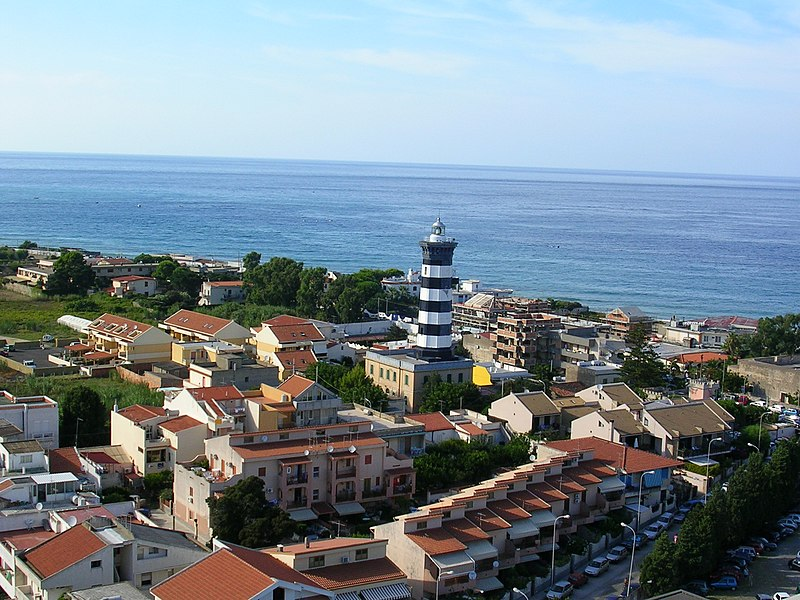
This is unused high-voltage support (height 232 meters, the highest in the world). Now it is an indisputable landmark, and in the evening it is illuminated in such a way that it further distinguishes it from the waters of the strait. The building, majestically towering next to the beach, was built between the 40s and 50s.
Therefore, Capo Peloro also offers tourists clean water where they can relax a little. Here you can also admire the soothing landscape, rich in fauna and flora. You will always enjoy a pleasant temperature thanks to even a light breeze. On this beach of sand mixed with pebbles, in addition to renting umbrellas and sun loungers and enjoying a tan, you can try your hand at various water sports. This area is part of the Kapo Peloro Nature Reserve, which, in addition to several hectares of land, includes two lakes: Lake Faro and Lake Ganzirri.
Ganzirri Lake
The next stop on our journey is Lake Ganzirri, which is located about 9 kilometers from Messina, near Capo Peloro. The name probably comes from the Arabic (Gadir), which means swamp. In fact, in ancient times the area was completely swampy. The waters communicate with the sea through a series of channels built by the British, starting in 1830. Of the three channels, one is indoor, the second is outdoor, and the third connects Lake Ganzirri with Lake Faro.
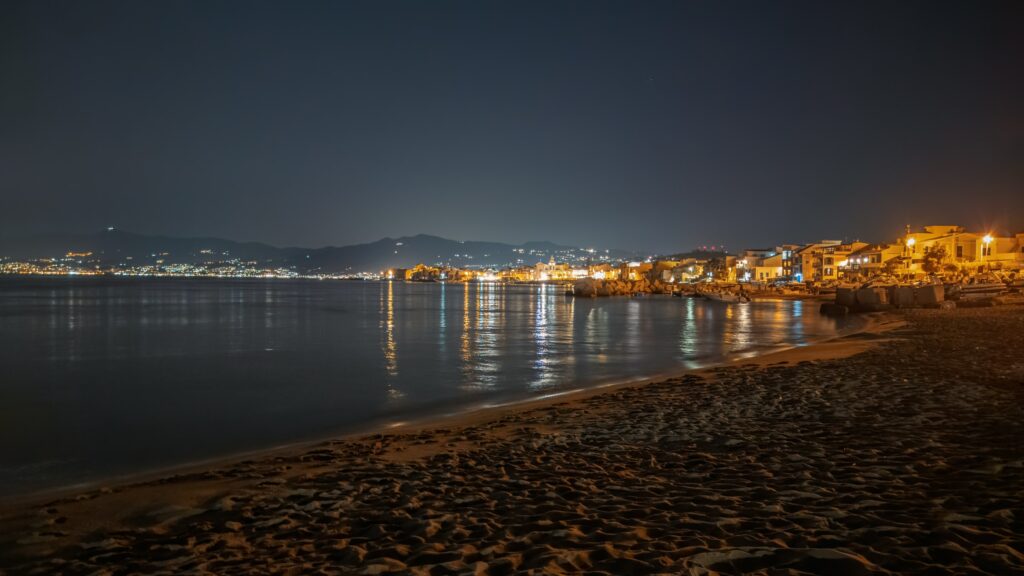
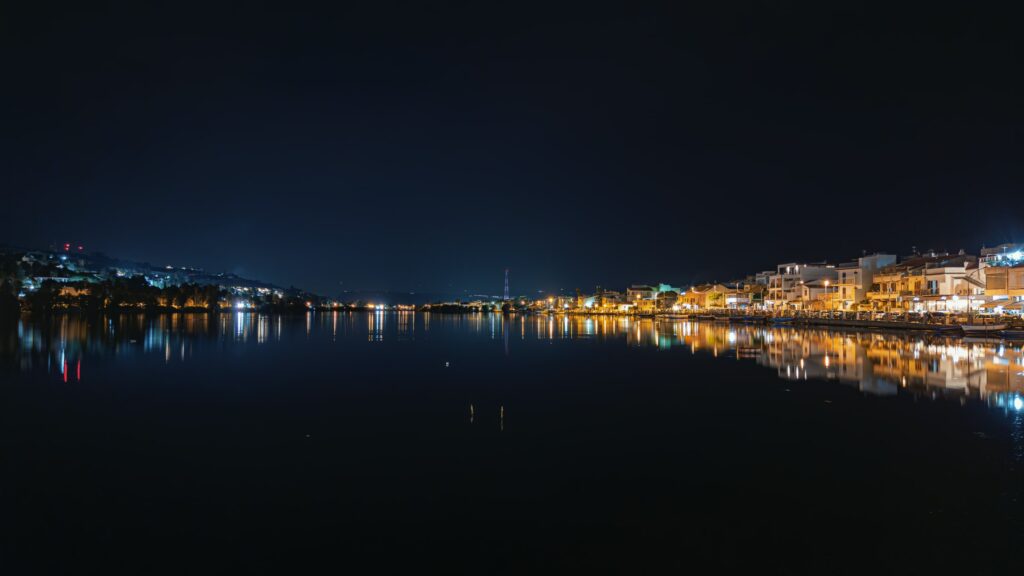
The lake is about 250 meters wide and 1.7 kilometers long. Its maximum depth is 7 meters. This area is associated with traditional activities related to the breeding of tellini and mussels, and for this reason, it has been recognized as an asset of ethnoanthropological interest.
Orion Fountain
This is one of the main monuments of the Piazza del Duomo: its construction dates back to 1553, the year when the first city aqueduct was glorified and wants to celebrate Orione, the hunter-founder of the city, who is represented in the company of his faithful dog Sirio and with the shield of the crusader Messina. The four figures at the base represent the Tiber, Nile, Ebro, and Camaro rivers (whose waters were transferred to create the aqueduct).
The central pools are supported by some mythological figures. The work was commissioned by the Tuscan sculptor Montorsoli (a pupil of Michelangelo) by the city Senate. To accommodate the giant fountain, it was decided to demolish the Church of San Lorenzo. The building was rebuilt by Montorsoli himself, using Renaissance lines, but collapsed during the earthquake of 1783.
Fountain of Neptune
The Fountain of Neptune is the second fountain created by Montorsoli, a pupil of Michelangelo. It is located near Garibaldi Street and depicts God in all his majesty. At the center of the work is a god who holds his trident firmly, with his back to the sea. A symbolic gesture by which the sea (and its wealth) will almost be offered to the inhabitants of Messina. Under Neptune, Scylla and Charybdis are visible among the waves in the middle of four seahorses symbolizing the ocean.
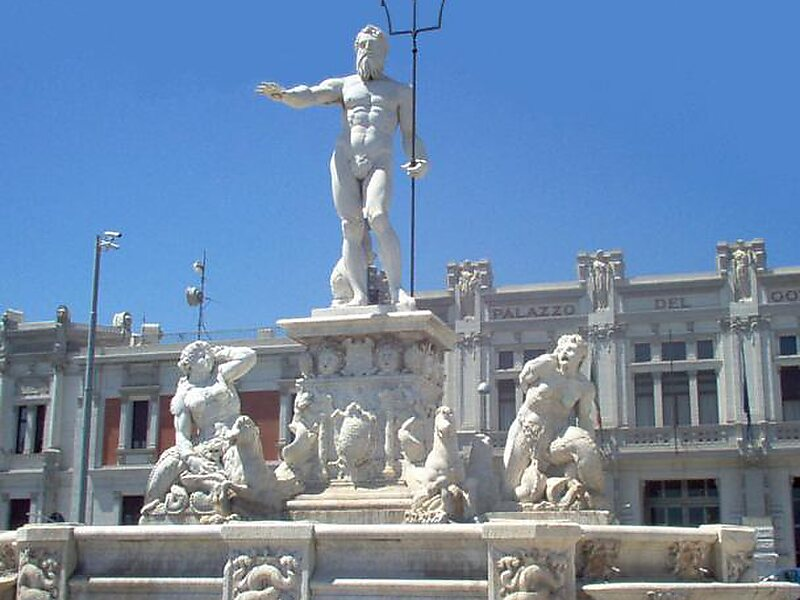
The sculptures, which seem to come out of the pool, rest on a pedestal, among the decorations of which are the coat of arms of the city and large eagles symbolizing Spain, with the imperial coat of arms on the chest. The edge of the large tub is interrupted by four smaller tubs that enter the corners. The monument is complemented by numerous inscriptions.
Church of Santissima Annunziata dei Catalani
Another example of the beautiful artistic and historical heritage of Messina: this church was built in the twelfth century, it seems, on the remains of a pagan building dedicated to Neptune. During the long Saracen period, it was converted into a mosque to return to the Catholic faith again. The church is a basilica with a Latin cross and has three naves.
The facade has three doors, above the central one, there is a Catalan coat of arms in the shape of a diamond. In the basement, there is a crypt, which consists of several rooms and winds under the transept: the largest of them has a rectangular shape, a rustic altar, and a stone vault. This is one of the few churches that managed to survive earthquakes and bombings. In front of the church, there is a bronze monument built in honor of Don Juan of Austria during the Battle of Lepanto against the Turks.










